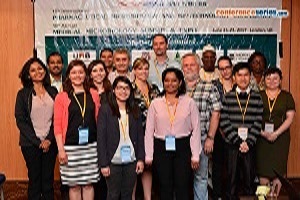
Godfred Menezes
Hail University, UAE
Title: Evaluation of synergistic activity of lactoferrin with antibiotics against drug resistant bacterial pathogens
Biography
Biography: Godfred Menezes
Abstract
The multidrug-resistant (MDR) bacterial infections have escalated as one of the world's utmost health issues. The progress of novel antibiotics has declined over the last half century. The aim of this study was to determine the effect of lactoferrin (human, bovine and camel) on minimum inhibitory concentrations (MICs) of important antibiotics in use against drug resistant bacterial pathogens encountered in the region of Hail, Kingdom of Saudi Arabia (KSA). Totally 147 clinical bacterial isolates were successfully isolated. Pathogens included were: Methicillin resistant Staphylococcus aureus (MRSA)-30 isolates; methicillin resistant coagulase negative Staphylococcus-30 isolates; extended-spectrum beta-lactamase (ESBL) producing Enterobacteriaceae-40 isolates; fluoroquinolone resistant gram negative pathogens-30 isolates; multidrug resistant Pseudomonas species- 05 isolates; carbapenem resistant gram negative pathogens- 05 isolates; AmpC beta-lactamase producing gram negative pathogens- 05 isolates; vancomycin resistant enterococci (VRE)- 02 isolates. The methods employed were MALDI-TOF for identification, MicroScan WalkAway system for identification, susceptibility testing and LF synergism testing. PCR-Sanger sequencing was done (before and after exposure to LF synergism) to study the molecular biology aspects of the study. In our study, the reproducible synergism effect of LF with antibiotics was found to be remarkable. To specify the phenotypic effects of LF in synergism with antibiotics: the isolates producing ESBL had turned non-ESBL; quinolone resistant isolates had turned susceptible; MRSA had turned MSSA (methicillin susceptible) and VRE had turned susceptible. The molecular biological study suggests changes only in the gene expression after the exposure to LF compounds. The results of this study demonstrated similar effect with comparable results for the LF tested from three different sources (human, bovine and camel). The outcome knowledge of the study would certainly help the Ministry of Health (MOH) in planning the LF adjuvant treatment methods for locally faced drug resistant pathogens causing different infections.




